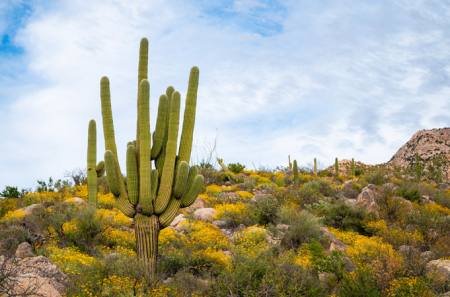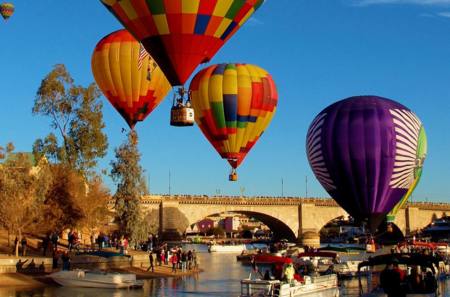Fort Bowie National Historic Site
Explore the remnants of a 19th-century military base occupied during the Apache Wars.
A trip to Fort Bowie goes deep into Arizona’s backcountry and shines a light on a cultural time capsule. Apache Pass is a route thousands of settlers used during westward expansion. Fort Bowie was built to give safe passage to settlers and supply units, leading to decades of skirmishes between U.S. military forces and native Apache people. Apache leaders Cochise and Geronimo battled for years to reclaim their homelands. Geronimo and his band surrendered in 1886, marking the end of the Apache Wars. The U.S. Army officially closed the fort in 1894.
Hike In/Hike Out
To reach the fort ruins, visitors hike a 1.5-mile trail over gently sloping hills and across dry washes and riverbeds. Remnants of the Butterfield Stage Route and the fort’s cemetery come into view along the way. Also on the trail, Apache Spring shows why this site was favored by the area’s original inhabitants and the settlers who followed. Visitors can choose the more strenuous Overlook Ridge Trail to return to the parking area. This hike out is steeper and more exposed to the sun than the main trail but leads to 360-degree views of the Dos Cabezas and Chiricahua mountains.
Tour the Ruins
Many historic sites in Arizona have a structure or two of note, but Fort Bowie’s ruins spread out across a valley floor and include evidence of a fully functional community. See the foundations of the officer quarters and the rowhouses where enlisted men lived, as well as the remnants of a schoolhouse, library, general store, recreation areas and many other relics from the past. Visitors can hike to the fort sunrise to sunset — but to get the whole story, arrive while the visitor center and museum are open, 8:30 a.m. to 4 p.m. daily.
Visit Chiricahua National Monument
From the parking area, continue west on the graded-gravel Apache Pass Road for 9 miles to reach Highway 186. From there, Chiricahua National Monument is only a few minutes south. Hiking trails encourage visitors to explore the vast homeland of the Chiricahua Apache people, who were intricately connected to the fort. This area was desirable for its constant water source that supported wild game and edible plants and provided building materials for shelters, tools and weapons. Plan an overnight stay at Bonita Creek Campground or make nearby Willcox your base camp to spend two days exploring these intriguing heritage sites.
For More Information
For the most current information on operating days, hours and pricing, please visit the destination website.
More to Discover Near Fort Bowie National Historic Site
Must Do
Southern Arizona's Hidden Gems and Secret Places
Arizona is famously known for the Grand Canyon, but it's the smaller, quirkier, hidden and off-the-beaten-path spots that lend charm to our...
Road Trips & Tours
Eat, Drink, and Explore Tucson and Tombstone
In 2015, UNESCO proclaimed Tucson a City of Gastronomy, a venerable nod to its unique regional cuisines, abundant farmers markets and copious...






